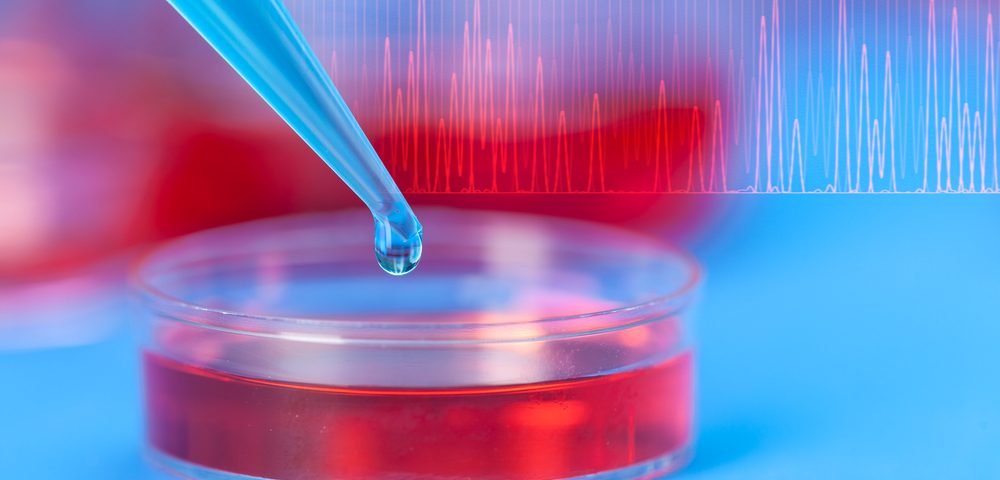The glioma-associated oncogene homolog 1 (GLI1) protein may contribute to endometriosis progression by promoting cells’ proliferation and ability to invade other tissues, a study suggests.
The findings support GLI1 as a potential target for future therapeutics seeking to stop endometriosis.
The study, “GLI1 is increased in ovarian endometriosis and regulates migration, invasion and proliferation of human endometrial stromal cells in endometriosis,” was published in the journal Annals of Translational Medicine.
Despite its benign nature, endometriosis shares some features with cancers, including the cells’ ability to travel and invade other tissues, excessive cellular proliferation, and disease recurrence.
Previous research has suggested that cancer-associated molecular mechanisms could be supporting the formation of endometriosis lesions. However, researchers do not fully understand how endometrial cells are able to escape and invade other organs.
A group of Chinese researchers investigated the role of the “Sonic Hedgehog” (SHH) pathway, a signaling cascade that is essential during embryonic development and also is a part of tumor development.
They focused on the GLI1. Activation of the SHH pathway by external factors triggers the relocation of GLI1 from the cell’s body (cytoplasm) to the nucleus, where it activates genes that regulate proliferation, cell death, migration and invasion.
Abnormal activation of GLI1 has been reported in female cancers, including ovarian, endometrial and breast. Moreover, evidence suggests that SHH also is activated in endometriosis. “However, the expression and function of the GLI1 in human ovarian endometriosis remains to be elucidated,” the authors wrote.
They first analyzed GLI1’s location and levels in tissue samples from ovarian endometriosis patients. Then, to assess the protein’s role in endometriosis, the researchers analyzed GLI1 levels in the endometrium (lining of the uterus) samples of ovarian endometriosis patients and healthy individuals.
In total, they analyzed 31 cases of normal endometrium tissue collected from healthy fertile women and 30 samples of ovarian endometriotic tissues.
In normal cells, GLI1 was found mainly in the cell cytoplasm, while in ovarian endometrium cells from endometriosis patients this protein was observed in both the cytoplasm and nucleus. Results showed that nuclear GLI1 was present in 29 endometriosis samples (96.7% of the analyzed cases) and in none of the healthy samples.
Next, researchers asked whether GLI1 expression was deregulated. By looking at the RNA and protein level, they saw that the levels of GLI1 were elevated in endometriosis tissue compared to healthy samples.
Since GLI1 is known for its role in cancer aggressiveness, they then investigated whether GLI1 helped promote cancer-like features in endometrial cells.
To do so, researchers used two strategies to impair GLI1: a genetic strategy that halts the gene expression, or using a chemical inhibitor called GANT-61. Both approaches were tested in the lab using human endometrial cells.
Results showed that impairing GLI1 significantly reduced endometriosis cells mobility and their invasive capacities. Another experiment revealed that without GLI1 the cells proliferated less and had limited capacity to form colonies (group of cells).
To understand how GLI1 was promoting this behavior, researchers analyzed the levels of two enzymes (called matrix metalloproteinases 2 and 9), which are used by cells to destroy the extracellular matrix — the mesh-like scaffold surrounding cells — and in this way invade tissues.
Their findings showed that GLI1 inhibition led to a reduction of both enzymes, which “suggest[s] that elevation of GLI1 may contribute to cell migration and invasion via upregulation of MMP2 and MMP2 in human endometrial stromal cells,” the researchers wrote.
Overall, these findings suggest that GLI1 is a driver of endometriosis and is a likely target for future therapies.
“Our research indicates an important role of GLI1 in the pathogenesis [disease mechanisms] and development of endometriosis,” researchers wrote.
“Understanding the GLI1 gene is a key to improve our understanding of the pathogenesis of endometriosis as well as developing new and more effective therapeutic strategies for treating endometriosis,” the study concluded.

